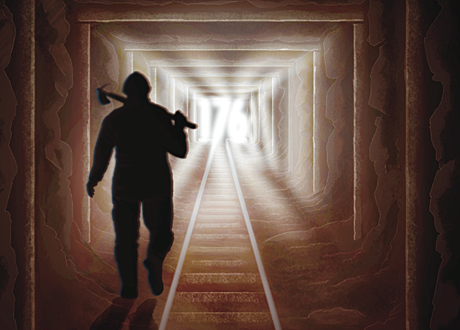8 November, 2012Almost two years after the tragic mine accident at Pike River, New Zealand that killed 29 miners, the Royal Commission of Inquiry published its damning report this week illustrating an “unrelenting picture of failure at virtually every level”.
The extent of the failure of management and the New Zealand Department of Labour to ensure basic safety measures at the mine is shocking, it is now clear that the accident could have happened earlier and should have been avoided after numerous warnings. The warnings were largely ignored in the lead-up to the accident as management cut corners to maintain production levels.
Unions’ calls for stronger regulations, an independent and well-resourced mine safety inspectorate and genuine worker involvement in health and safety, are all echoed by the report’s recommendations as imperative to building a preventative culture into the future.
The damning report supports IndustriALL’s campaign for ratification and proper implementation of ILO Convention 176, the Safety and Health in Mines Convention and the adoption of its associated Recommendation 183. IndustriALL believes that C176 is not an instrument intended only for developing nations. Many developed countries’ governments avoid ratification and its commitments on mine safety, under pressure from business leaders.
On 19 November 2010, a horrid methane gas blast killed the 29 miners, including 11 members of IndustriALL’s affiliate Engineering, Printing and Manufacturing Union (EPMU). It was the worst New Zealand mine disaster in 119 years. A subsequent explosion occurred on 24 November, after which authorities declared the miners dead, and in the days that followed two further explosions occurred.
The miners’ bodies still lie in the mine. EPMU assistant national secretary Ged O’Connell welcomed the findings and recommendations of the Royal Commission and called on the New Zealand Government to implement them, he stated:
“If the 29 men who lie in the mine are not to have died in vain then these recommendations must be implemented without delay and without reservation."
O’Connell added:
"We are particularly pleased to see the re-introduction of worker-elected check inspectors, a strong focus on strengthening mine safety regulations and the creation of a new Crown agency to monitor health and safety.
Convention 176 demands that mines must be properly constructed with at least two separate means of exit. Sufficient ventilation with monitoring for contaminants must be provided. If serious dangers are detected, operations must be stopped and workers evacuated. Workers have the right to report accidents and dangerous occurrences. Workers have the right to refuse unsafe work. In addition, workers can select workplace health and safety representatives and they have the authority to participate in investigations and inspections.
The Pike River colliery is New Zealand’s largest underground mine, laden with 17.6 million tonnes of hard coking coal under the Paparoa Range of the South Island. Pike River Coal Ltd., an enterprise previously owned by New Zealand Oil & Gas Ltd. filed for bankruptcy due to the tragedy.
